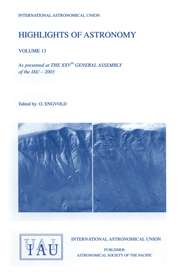No CrossRef data available.
Article contents
UV Observations of Close Binary Stars
Published online by Cambridge University Press: 30 March 2016
Extract
Core share and HTML view are not available for this content. However, as you have access to this content, a full PDF is available via the ‘Save PDF’ action button.
Ultraviolet spectroscopic observations made with the Copernicus and IUE spacecraft have been analyzed. The observations represent a collaborative effort with G. J. Peters.
Observational evidence supporting the existence of a turbulent accretion layer has been discussed earlier by Peters. Ionization equilibrium calculations suggest the following physical conditions in the layer: T ~ 125000 K°, Ne ~ 109 cm-3; composition: Nitrogen rich, carbon poor. Observations also show the region to be turbulent and not co-rotating with the accreting star. We conclude that the region is formed by new material arriving from the secondary and that the accretion process is turbulent.
Information
- Type
- Joint Commission Meetings
- Information
- Copyright
- Copyright © Reidel 1983

